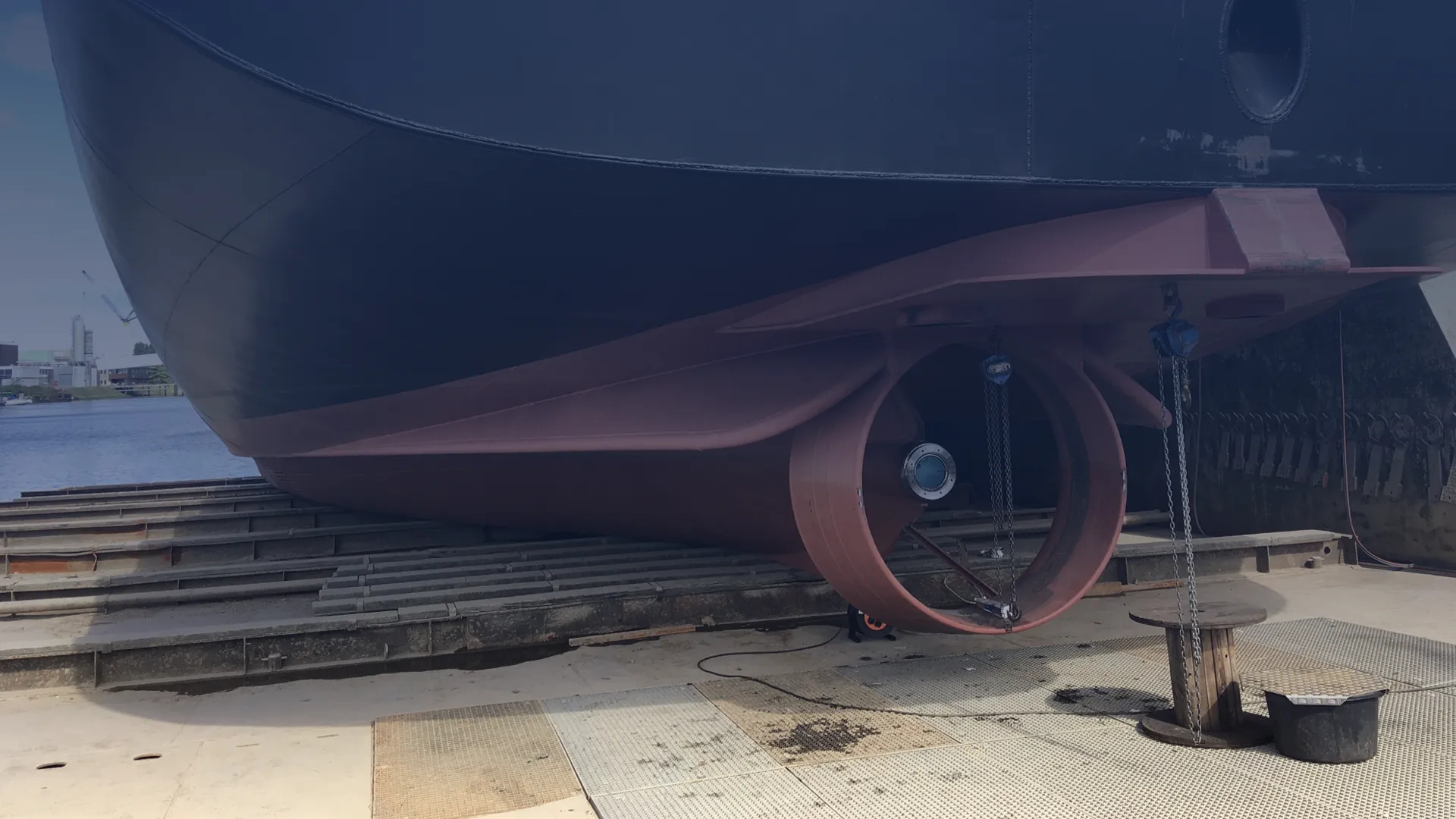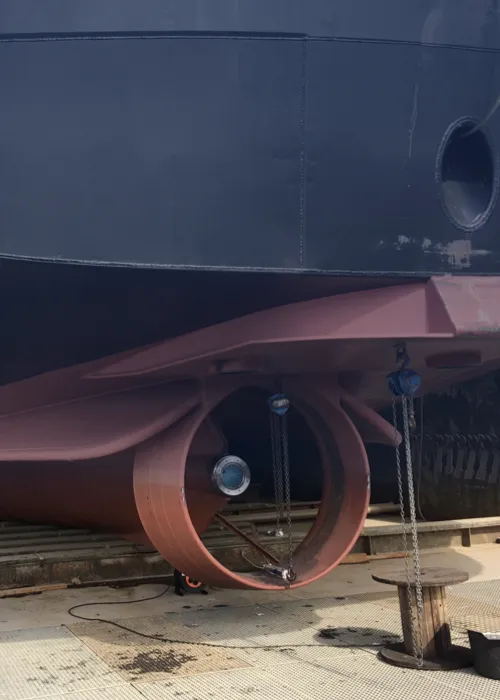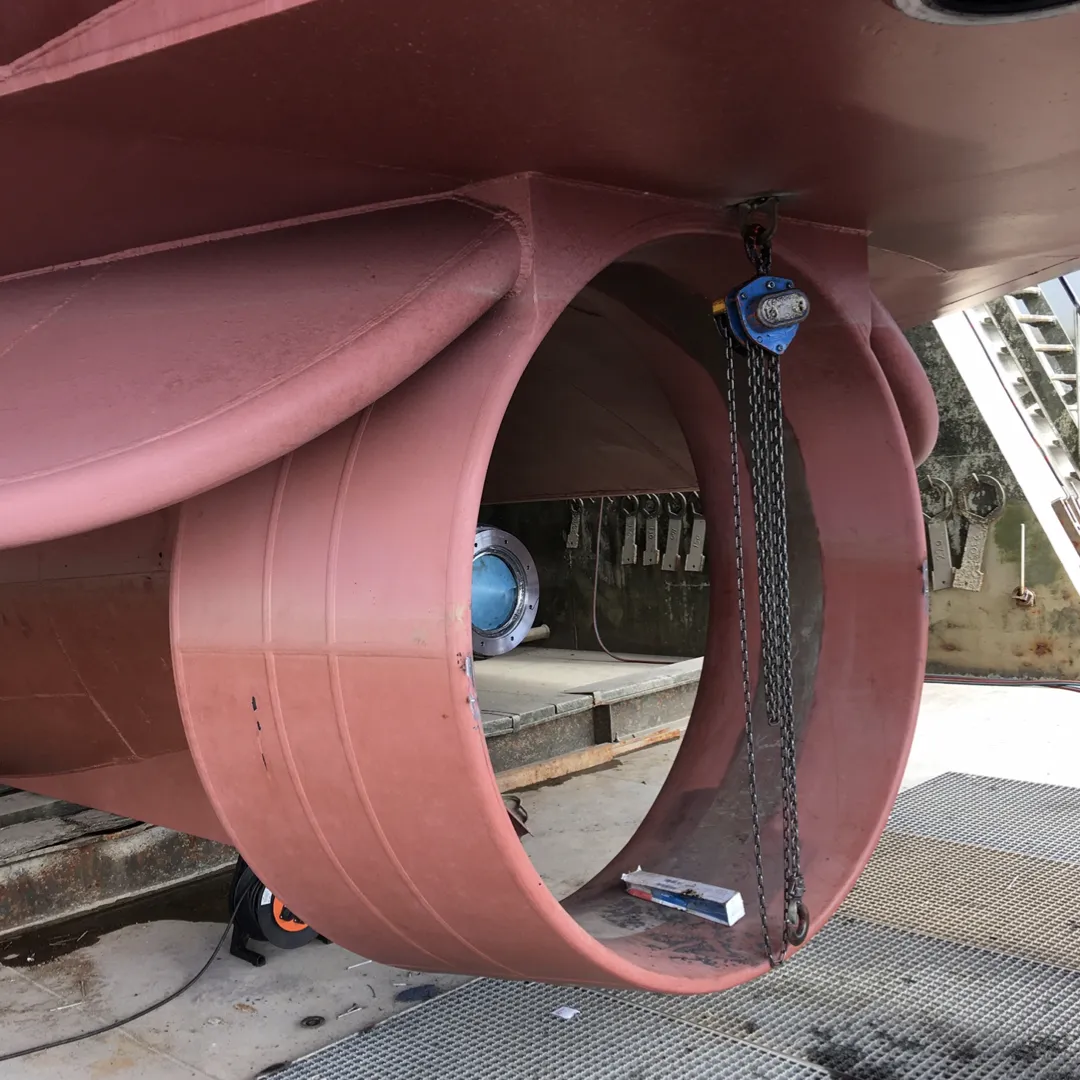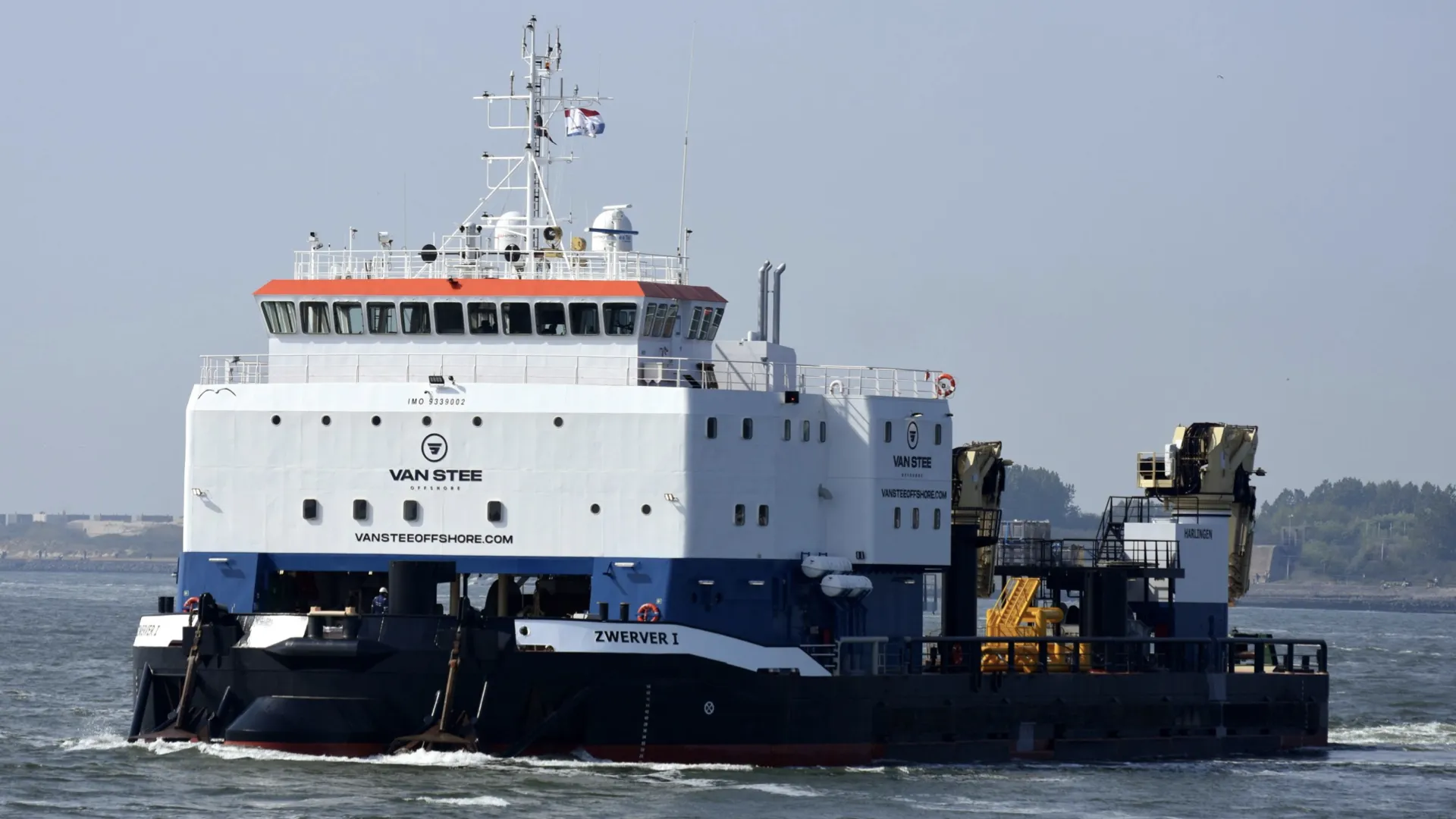
CFD-Optimized Propeller Nozzle

Are you in search of a nozzle with the correct profile (for example, 19A, 37, or HR) that is tailored to your other appendages such as your ship’s propeller and rudder, ship shape, sailing profile, and seamlessly integrated into your stern? Whether it concerns an inland vessel, dredger, trailing suction hopper dredger, crane vessel, offshore support vessel, ferry, passenger ship, or superyacht, our partner is pleased to investigate the hydrodynamic performance of your existing or newly designed ship to achieve an optimal propeller nozzle. Every propeller nozzle design aims for a cost-effective solution with increased fuel efficiency and maneuverability.
CFD-Optimized Propeller Nozzle
Our partner is pleased to investigate the hydrodynamic performance of your existing or newly designed ship to achieve an optimal propeller nozzle.

Design Process
The selection of the appropriate nozzle profile, such as 19A, 37, or HR, is a crucial step towards more efficiently propelling your vessel.
This profile is determined based on various factors, including the shape of the vessel, the characteristics of the ship’s propeller and rudder, and the intended sailing profile of the vessel.
Properties
Whether it’s a 19A, 37, or HR nozzle, each undergoes thorough testing and can be certified by almost any classification bureau. This results in high-quality performance that meets the strictest standards in the shipping industry.
What sets the approach apart is the utilization of advanced CFD studies. These science-based investigations enable designers to select and, where possible, enhance the most optimal propeller nozzle profile. This creates added value that goes beyond what standard nozzles offer.

Existing Vessel
Is your current vessel in need of a new nozzle, or do you currently have a fixed open propeller and would like to know how much efficiency improvement a new nozzle can offer? You have the option to either install a new CFD-optimized nozzle with your current nozzle propeller, as well as the possibility to design and deliver both a CFD-optimized ship propeller and nozzle. This takes into account aspects such as your current rudder installation, hull shape, and ship’s sailing profile.
If you still have the drawings of your vessel, the designers can immediately start with the CFD analysis to select the most ideal configuration and potentially optimize it. But even if you no longer have drawings, that’s not a problem. With the help of 3D scans and accurate measurements, your fore and aft ship, including existing propulsion components such as ship propellers and rudders, can be thoroughly surveyed.
Pre-Duct
If you are looking for ways to improve the energy efficiency of your vessel, the Pre-Duct, one of the Energy Saving Devices (ESDs), offers a powerful solution. While a CFD-optimized propeller nozzle allows you to select and, where possible, improve the best nozzle profile for your ship, the Pre-Duct takes it a step further.
The Pre-Duct is a specially designed nozzle placed in front of the ship’s propeller. This innovative component is developed to optimize the inflow to the propeller, resulting in enhanced overall performance of the vessel. By utilizing this practical energy-saving solution, efficiency improvements of between 2 and 6% can be achieved.
In Practice
The value of CFD-optimized propeller nozzles has been proven in various vessels and sectors within the maritime industry, from impressive new build and retrofit projects in inland shipping to rigorous conversion projects in the offshore sector.
For example, a client chose to convert an existing workboat from 2006 into a multifunctional diesel-electric DP-2 workboat (see the photo below).
While the former workboat was equipped with four azimuth thrusters, the modernized workboat now features two new electric bow thrusters, along with two fixed pitch CFD-optimized ship propellers in a nozzle.
Design Process
The selection of the appropriate nozzle profile, such as 19A, 37, or HR, is a crucial step towards more efficiently propelling your vessel. This profile is determined based on various factors, including the shape of the vessel, the characteristics of the ship’s propeller and rudder, and the intended sailing profile of the vessel.
Properties
Whether it’s a 19A, 37, or HR nozzle, each undergoes thorough testing and can be certified by almost any classification bureau. This results in high-quality performance that meets the strictest standards in the shipping industry.
What sets the approach apart is the utilization of advanced CFD studies. These science-based investigations enable designers to select and, where possible, enhance the most optimal propeller nozzle profile. This creates added value that goes beyond what standard nozzles offer.

Existing Vessel
Is your current vessel in need of a new nozzle, or do you currently have a fixed open propeller and would like to know how much efficiency improvement a new nozzle can offer? You have the option to either install a new CFD-optimized nozzle with your current nozzle propeller, as well as the possibility to design and deliver both a CFD-optimized ship propeller and nozzle. This takes into account aspects such as your current rudder installation, hull shape, and ship’s sailing profile.
If you still have the drawings of your vessel, the designers can immediately start with the CFD analysis to select the most ideal configuration and potentially optimize it. But even if you no longer have drawings, that’s not a problem. With the help of 3D scans and accurate measurements, your fore and aft ship, including existing propulsion components such as ship propellers and rudders, can be thoroughly surveyed.
Pre-Duct
If you are looking for ways to improve the energy efficiency of your vessel, the Pre-Duct, one of the Energy Saving Devices (ESDs), offers a powerful solution. While a CFD-optimized propeller nozzle allows you to select and, where possible, improve the best nozzle profile for your ship, the Pre-Duct takes it a step further.
The Pre-Duct is a specially designed nozzle placed in front of the ship’s propeller. This innovative component is developed to optimize the inflow to the propeller, resulting in enhanced overall performance of the vessel. By utilizing this practical energy-saving solution, efficiency improvements of between 2 and 6% can be achieved.
In Practice
The value of CFD-optimized propeller nozzles has been proven in various vessels and sectors within the maritime industry, from impressive new build and retrofit projects in inland shipping to rigorous conversion projects in the offshore sector.
For example, a client chose to convert an existing workboat from 2006 into a multifunctional diesel-electric DP-2 workboat (see the photo below). While the former workboat was equipped with four azimuth thrusters, the modernized workboat now features two new electric bow thrusters, along with two fixed pitch CFD-optimized ship propellers in a nozzle.
Frequently Asked Questions
Is it possible to get a propeller nozzle without a CFD study?
Certainly, if you have already made a specific choice regarding the nozzle profile, dimensions, and material, a standard propeller nozzle according to your specifications without further CFD study is also possible.
In this case, the optimal nozzle shape for your vessel and sailing profile will not be determined. However, it is important to emphasize that, since the hydrodynamic performance of your vessel, including components such as ship propellers and ship rudders, has not been studied using CFD, the responsibility for the performance rests with you as the customer.
Are you still unsure whether you want a CFD-optimized propeller nozzle or prefer to choose a standard nozzle profile, such as 19A, 37, or HR, based on your own practical experience? Feel free to request a quote, both with and without a CFD study, to see the price difference and assess the potential added value of a CFD-optimized nozzle for your vessel.

